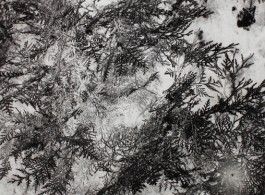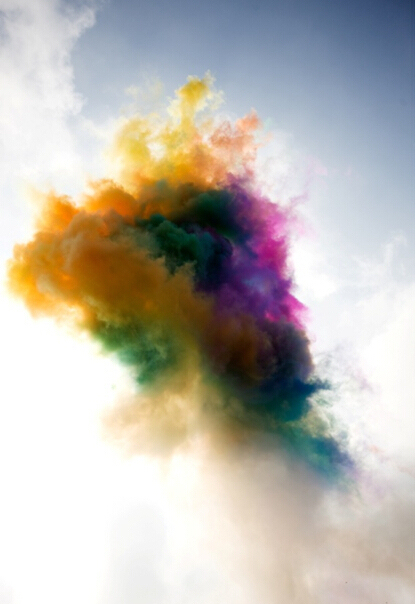at Photo Shanghai 2015
Booth No. C06
Public Opening Times︱Thursday 10 September 2015
12:00hrs – 16:00hrs – Global Museum Summit
16:00hrs – 18:00hrs – Collectors Private View
18:00hrs – 21:00hrs – Vernissage, Opening Night
Friday 11 September 2015
11:00hrs – 18:00hrs – Public Opening
Saturday 12 September 2015
11:00hrs – 18:00hrs – Public Opening
Sunday 13 September 2015
11:00hrs – 18:00hrs – Public Opening
As one of the most active cities in China’s contemporary art scene, Chengdu is also the most active city in China’s new image art. Since the 1980s, many artists who live in Chengdu have carried out personal artistic explorations ranging from documentary to conceptual photography and have received wide recognition both domestically and internationally. Chen Qiulin, Chen Xiaoyi, Feng Li, Li Lang, Muge and Zhang Kechun are some of the most outstanding representatives of this group.
Chen Qiulin (b. 1975, Yichang City, Hubei Province, now lives and works in Chengdu) graduated from the Print Department of the Sichuan Academy of Fine Arts in 2000. She is an outstanding artist of China’s younger generation whose work focuses on the social impact of China’s political and economic reforms. Chen Qiulin summarizes and makes visual the contradictions caused by the constant challenges that modern life poses to traditional value systems. The photograph series Empty City, exhibited in Photo Shanghai soonly, is important work for artist to discuss the raveling relationship between personal memory and Chinese increasing urbanization. The serie has been exxhibited widley in Sydeny 4A Centre for Contemporary Asian Art, Contemporary Arts Museum Houston, Honolulu Museum of Art, A Thousand Plateaus Art Space, Art Basel Hong Kong and so on. In 2006, Chen Qiulin was the only Chinese artist who received an Asian Cultural Council (ACC) grant. In 2008, she was nominated for the JP Morgan First Asian World Women Forum Rising Talents Programme along with seven other women from various fields. In 2009, she was nominated by the French Consulate to teach at the National Art Center’s College of the Arts in Nice. In the same year, she was nominated as an influential young artist at the AAC’s fourth annual Art of China awards. Chen Qiulin has also been invited to the China Institute (New York), Columbia University, Duke University, Na Shier Museum, the University of Manchester, the Whitworth Art Gallery, the Asian Women’s Fund, and others for lectures and exchanges.
Chen Xiaoyi born in Sichuan, China in 1992, currently lives and works in UK and China. She received her MA in photography from the London College of Communications in 2014 and was awarded the LCC/Photofusion Prize. Chen was also earned the prize of Three Shadows Photography Award 2015, China’s most prestigious photography contest; her work has been exhibited and published internationally. Chen’s practice is tied to a natural, oriental aesthetic, influenced by Western abstract art and oriental philosophy. Photography is a personal tool for Chen, used to question broad concepts that migrate from the personal to the philosophical realm. Her recent work focuses on the combination of photography and printmaking, a combination of techniques used to explore beneath the surface of things by simplifying and abstracting; an approach aimed at reviving spiritual awareness and intuition before entering the symbolic nature of what we view.
Feng Li (born in Chengdu in 1971, currently living and working in Chengdu) is a photographer like a sniper, hanging out in the city, using the eagle-like eyes to observe the person, objects and scenes. Once he find the targets tending to ”the truth”, he will close to it and solidify the moment with flash lamp… This is the serie White Light won the New Photography Annual Jury Prize of the 8th Lianzhou International Photography Festival. Under Feng’s flash light, the ture person, objects and scenes are always gloomy, more closing to the anomalies of life. And this, is what the truth in Feng Li’s eyes. He insists that he just recoreded the “animals” in city’s “white nights”. What is paradoxical, Feng has a government job, and his job is to take pictures and record those photos we often see in official and mainstream media: bright, perfect and fulling of “positive energy”.
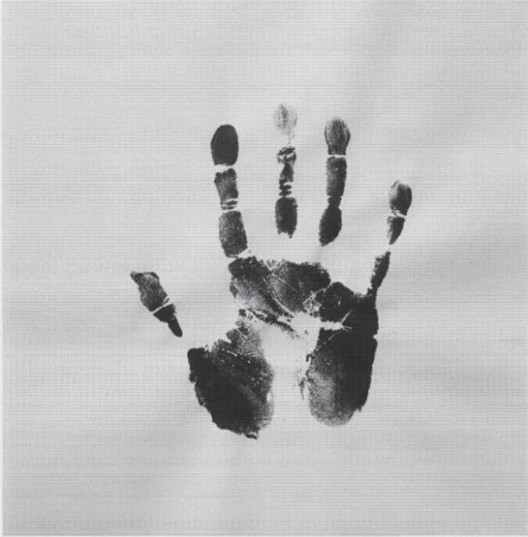
LI Lang , Father 1927.12.03-2010.08.27, My Father’s Handprint(Right) , Archival Pigment Print with Pencil Writing, 106.6×108cm, 2015, Ed.: 1
Li Lang (b. 1969, Chengdu, now lives and works in Chengdu) is an excellent photography artist who became known in the late 1990s. He built his reputation with the famous photography series “The Yi People,” which has won many prizes including the Mother Jones International Fund for Documentary Photography Award. In addition, this series has also been presented at many major art institutions and has been collected by museums including the San Francisco Museum of Modern Art, the Shanghai Art Museum, the Guangsong Museum of Art, and others. We will present his new photography series “Father 1927.12.03 – 2010.08.27” at Photo Shanghai. It has been presented in solo exhibitions at A Thousand Plateaus Art Space and Blindspot Gallery (HK). He has also presented this series in many important exhibitions including the photography biennale at CAFA Art Museum and Chinese Contemporary Photography: 2009-2014 (Minsheng Art Museum, 2014). This series discusses time, life and body politics, and is an important mark of his transition from documentary photography to conceptual photography.
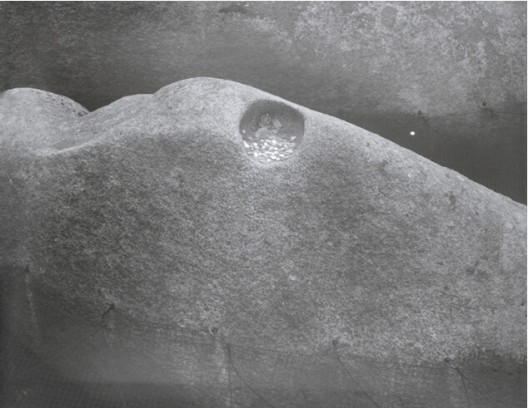
Muge, Ash.Shan-Shui 09.2011, Gelatin Silver Print, Bergger VCCB paper 280g, 40.3×45.8cm, 2011, Ed.: 8
Muge (b. 1979, Chongqing, now lives and works in Chengdu) won the Jury Prize of Daylight Photo (U.S.). Muge’s photography has a quality of fantasy. However, through these nostalgic images, the audience can see great changes, displacements, disappearances and searches. Under the surface of great change, Muge is searching for hope. Viewers can also feel time advancing: the past, the present and the future all exist in his photographic works.
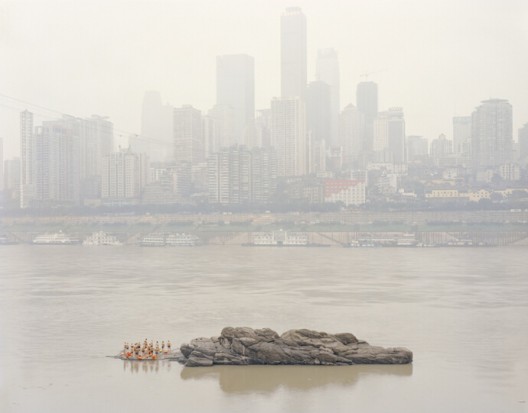
Zhang Kechun, Between Moutains and the Water, Giclee Print, Hahnemühleg Ultra smooth paper 305g, 78×100cm, 2014, Ed.: 7
Zhang Kechun (b. 1980, Sichuan, now lives and works in Chengdu) was awarded the National Geographic photography award in 2008. He was nominated for the TSPA Award in 2012, the Sony World Photography Awards in 2013, and the HSBC Prix pour la Photographie in 2014. He was awarded the Discovery Award from “Rencontres D’Arles” in 2014. We will present Zhang Kechun’s photography work “Yellow River,” a series of photographic works made from 2010 to 2013 that record the people, customs and current condition of the Yellow River. From the ocean mouth of the Yellow River, Zhang Kechun went upstream to the west until he arrived at the river source in Bayan Har Mountains in Qinghai. This seemingly poetic walk was not as romantic as it appears in the work. The stunning speed of economic development after the reform and opening-up of China makes it impossible for anyone, including artists, to be an outsider. As Zhang Kechun said in an interview, “All I can do is try to explain as calmly as possible.” He named this series with verses of The Book of Songs (Shijing), ”The Yellow River wide and deep, rolls northword its jubilant way (heshuiyangyang, beiliuguoguo)”. It also recalls for us the words of the ancient Chinese philosopher Confucius, “The passage of time is just like the flow of water, which goes on day and night (shizherusifu, bushezhouye),” and the eternal questions of Western philosophy: “Who are we? Where do we come from? Where are we going?”



